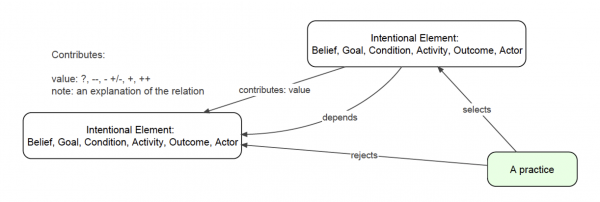Eigenschappen
| Context | Expertise Management Methodology |
|---|---|
| prefLabel | |
| altLabel | |
| hiddenLabel | |
| inScheme | |
| subject | |
| broader | EMontPatronen |
| narrower | |
| partOf | |
| association | |
| related | |
| creator |
De View-Navigation (VN) pagina's.
Er zijn geen VN pagina's gelinkt.
Description
The experience/practices pattern is very important; it puts the saved experience to use in the correct situation. Earlier the term ‘Degree of freedom’ was coined, which means the freedom to pick an action based on certain conditions and factors. The experience pattern is set out to decrease the degree of freedom. Restricting freedom might intuitively sound like a bad idea, however, it’s apparent that too much freedom can lead to poor choices. This is especially the case when many factors and conditions are involved.
Since the EMont keeps track of all previous contexts and relevant activities, it will be possible to determine what has or has not worked in the past. This way it’s essentially possible to look into the future. By comparing the conditions and the context to a previous situation, it will be possible to determine the outcome of the activity before it even starts. Activities that have worked well in the past are known as ‘good practices’, alternatively, activities that have failed in the past are known as ‘bad practices’. These good and bad practices can help choose the appropriate actions in a certain situation, because it has worked, or not worked in the past. Good practices can be ‘selected’ or ‘rejected’, the same goes for bad practices. This way, certain ‘Q’ elements of PQR can be selected, or actually deselected based on the previous results of the activity within a similar context (experiences), hereby reducing the degree of freedom. Selecting an activity based on certain conditions is something that people already do automatically, sometimes without even realizing it (subconsciously), for example: You are driving a car and suddenly a child crosses the road, luckily you aren’t driving too fast. Based on these conditions, the brain determines the best course of action based on previous experiences, which is to bring the vehicle to a halt. This kind of information is contained in the episodic memory. The challenge is storing this episodic memory in a computer system; experience has learned that the EMont has set a solid foundation in doing so. It is currently visualised like this:







